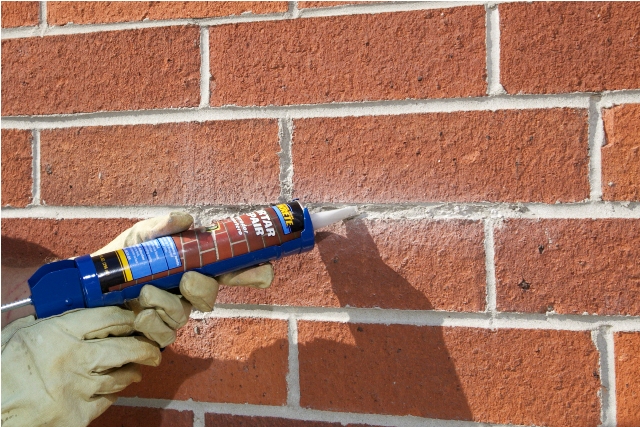 The chimney is commonly built using brick as part of the important structural materials. Brick is a sturdy and long-lasting building material. However, the mortar that holds bricks together, a mixture of cement and sand, can weaken and crumble. The mortar joints become damaged due to harsh weather conditions, particularly excessive amounts of water. Moisture can even damage rock masonry when water gets in due to weakened mortar joints. It is necessary repairing the crumbling mortar before the bricks fall. “Tuckpointing” is a repair process which stops the destructive process and provides numerous benefits.
The chimney is commonly built using brick as part of the important structural materials. Brick is a sturdy and long-lasting building material. However, the mortar that holds bricks together, a mixture of cement and sand, can weaken and crumble. The mortar joints become damaged due to harsh weather conditions, particularly excessive amounts of water. Moisture can even damage rock masonry when water gets in due to weakened mortar joints. It is necessary repairing the crumbling mortar before the bricks fall. “Tuckpointing” is a repair process which stops the destructive process and provides numerous benefits.
Tuckpointing is a way of using two contrasting colours of mortar in the mortar joints of brickwork, one colour matching the bricks themselves, to give an artificial impression that very fine joints have been made.
While bricks on a chimney can last about a century, mortar has a much shorter lifespan. Depending on how exposed the masonry is to excess water and other harsh conditions, mortar lasts about 25 years. It’s sometimes highly recommended that homeowners install a cricket, which is a compact diversion roof that prevents the chimney from being deluged in rainy weather. The layout of the roof and the position of the chimney affect how much or little water drainage contributes to the erosion of the mortar joints.
The most cost-effective action that a homeowner can take is to repair affected areas via tuckpointing when mortar joints become damaged. The alternative is to allow the mortar joints to deteriorate to the point that the chimney collapses, which makes a complete rebuild necessary–of course. The cost of a rebuild is far greater than the cost of repairs.
The essential idea behind tuckpointing is that damaged mortar is removed, and it is replaced with fresh mortar. Tuckpointing a red brick chimney involves the following basic steps:
1. Grounding or routing out the old mortar at a uniform depth.
2. Filling in red mortar in the newly routed grooves.
3. Cutting thin strips down the middle of the red mortar, to form grooves.
4. Filling in the grooves with a mortar color which matches the original mortar on the outside of the structure.
Benefits of Tuckpointing
Tuckpointing is really a crucial procedure for preserving the life of a chimney. Some of the benefits of performing needed tuckpointing on chimneys follow including corrosion of the mortar joints is stopped. In addition to that and also important to note through tuckpointing, structural stability of the chimney is restored. Failing to repair mortar joints will result in a weak chimney structure which will ultimately begin to lean or collapse.
Furthermore, tuckpointing helps to prevent water from entering into the chimney system. If the mortar joints are not repaired, water will seep down the chimney and sometimes between the chimney and the flue lining. Moisture can do a serious amount of unseen damage, such causing mold, mildew, and rotting wood. Moisture can also cause the ceiling and wallpaper around the chimney to become stained.
Compared to a complete tear-down and rebuild, tuckpointing is far more cost-effective. The procedure allows avoiding the expense of completely replacing the chimney structure. With the bonus of the chimney’s masonry materials are restored to their original condition. It also will increase the value of your home, when the masonry is in top condition.



